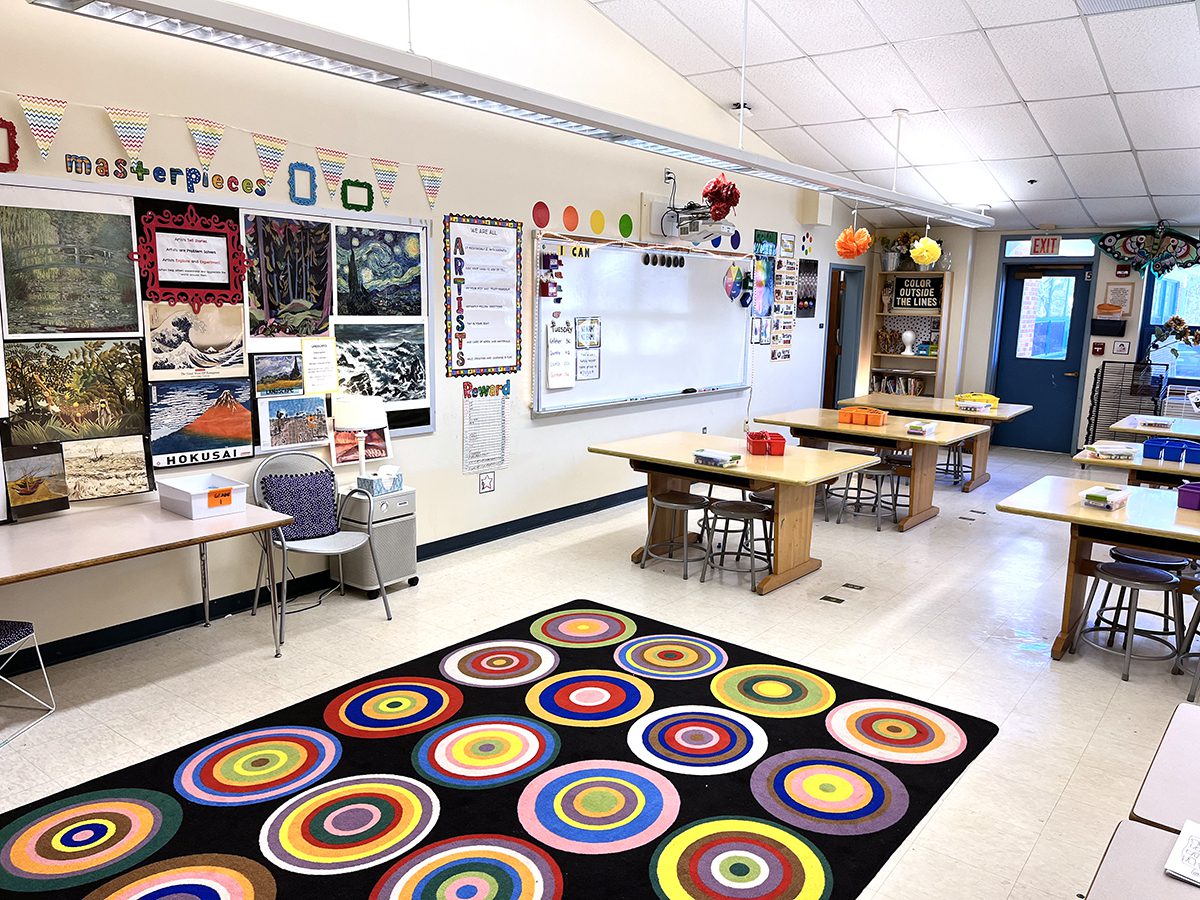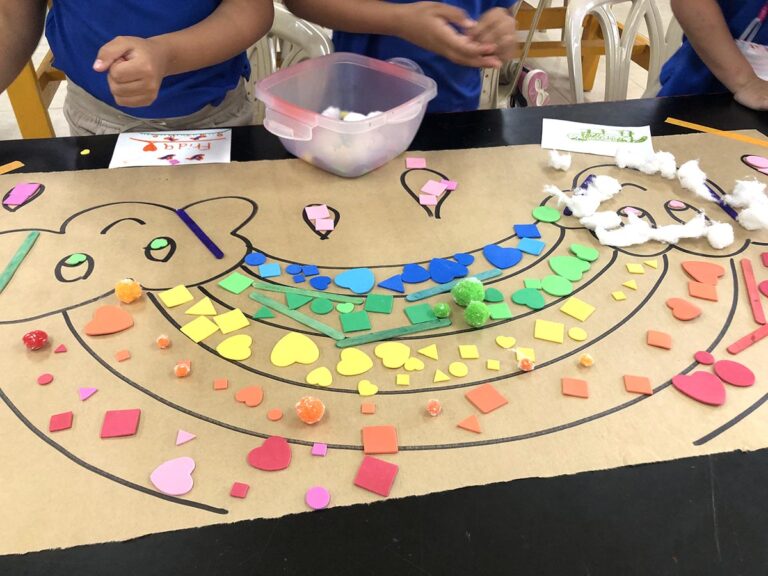Note: This article will use People First Language since we do not know the reader’s preference.
You spent time planning an amazing art lesson, taught it passionately, and now you are excited for your students to start making. You look over your classroom and see blank stares and students scrolling their phones or fiddling with their pencils. You hear students start chatting about the upcoming game and instigating others instead of sharing ideas for the project. They seem disinterested.
Does this scene look familiar?
Your first thought may be that your students are out to get you and make your life miserable! They must hate art. Take a step back and consider what else could be causing the disconnect. Are there other barriers in the way of getting them hooked? Perhaps you talked too much or focused too long on one part. Maybe a student forgot the next step, is struggling with a tool, or is too anxious to ask a question. Your students could be experiencing a cognitive learning barrier. Whether you don’t know what that is, or you do and are looking for strategies to support your students, keep reading!
Let’s look at cognitive barriers and eight strategies to overcome them.
For even more strategies to overcome cognitive learning barriers, enroll in Adapting the Art Room or talk to an admissions counselor to learn more about earning your Master of Education in Curriculum and Instruction, MEd. With a specialization in Inclusive Practices for Visual Arts, you can promote change in your classroom to help all students feel seen and succeed.
Get in touch with an admissions counselor!

What is a cognitive learning barrier?
Learning takes a lot of brain power and effort. Sometimes, there are factors that make learning more difficult. When the factor involves “what students know and how they interact mentally with the subject matter,” we refer to it as a cognitive learning barrier.
Cognitive barriers can include the following:
- Selective Attention
The ability to pay attention and stay focused is essential to learning. Multitasking is one major thing that can divide attention. - Mental Effort and Working Memory
Students can process only a few pieces of information at once. A large quantity, unfamiliarity, or disorganization of information can cause overload. - Prior Knowledge
We often rely on prior knowledge to build off of existing connections. Keep in mind that some students lack prior knowledge or may have misconceptions due to inaccurate information, faulty reasoning, or misinterpretation. - Learning Strategies
Many students are unprepared when it comes to how to learn, especially on their own. For instance, students may not know how to adequately and effectively study. We often assign a test and assume they know how to study for it. - Transfer of Learning
Students also tend to have difficulty applying knowledge to new and different contexts. This can be future units in the art room, interdisciplinary connections, or real-world applications. - Metacognition
Metacognition refers to being aware of one’s own thinking. Some students are not self-aware and need assistance with refining ideas, refocusing, reflection, and more. - Mental Mindset
A student may have self-protective walls up based on pre-conceived ideas. This can be around a past negative experience in the art room or based on the topic or concept at hand. - Fear
Show students how the course content is relevant and that you are committed to their success. If students are unsure or anxious, mistrust can build, and they will not invest in their learning.
Dr. Kelley Decleene is one of AOEU’s Adjunct Instructors and has more than thirty years of art teaching experience. Kelley is also a certified autism specialist who has done extensive research on an adaptive art program she designed and implemented. She firmly advocates that “all students can engage in meaningful and authentic artmaking if we make it possible for them.” Kelley encourages us to always assume ability and respect individuality. When we do this, we approach lesson planning and instruction by giving students the opportunities they need to prove their learning.
Consider cognitive learning barriers to help all students, not just those with a disability. Learning, just like art, is not a “one size fits all” approach. When we think about all of our diverse learners, we need to evaluate our teaching. We can use a range of instructional strategies to match the range of our learners. Tackling lessons and instruction from this lens is proactive and, as such, should not be extra “stuff” or extra work.

Let’s look at eight instructional strategies for student artists with cognitive learning barriers.
1. Simplify and scaffold.
Some students struggle with processing too much information at once, as discussed under the Mental Effort and Working Memory section above. Scaffolding, or breaking down the task or concept into smaller, more manageable steps, can help. Simplify by eliminating unnecessary steps or requirements and making the wording as direct as possible. This allows students to master one skill at a time without getting overwhelmed. It also removes sarcasm or idioms they may interpret literally and spend valuable processing time and energy on instead of the content. Remember to give students ample time and various opportunities to practice before moving on to the next step.
The art room is chaotic, with many moving parts and stimuli. Reflect on how you can simplify the studio environment. Create smaller workstations or provide only the supplies needed for an individual step. Also, try removing unnecessary distractions by streamlining your decor.
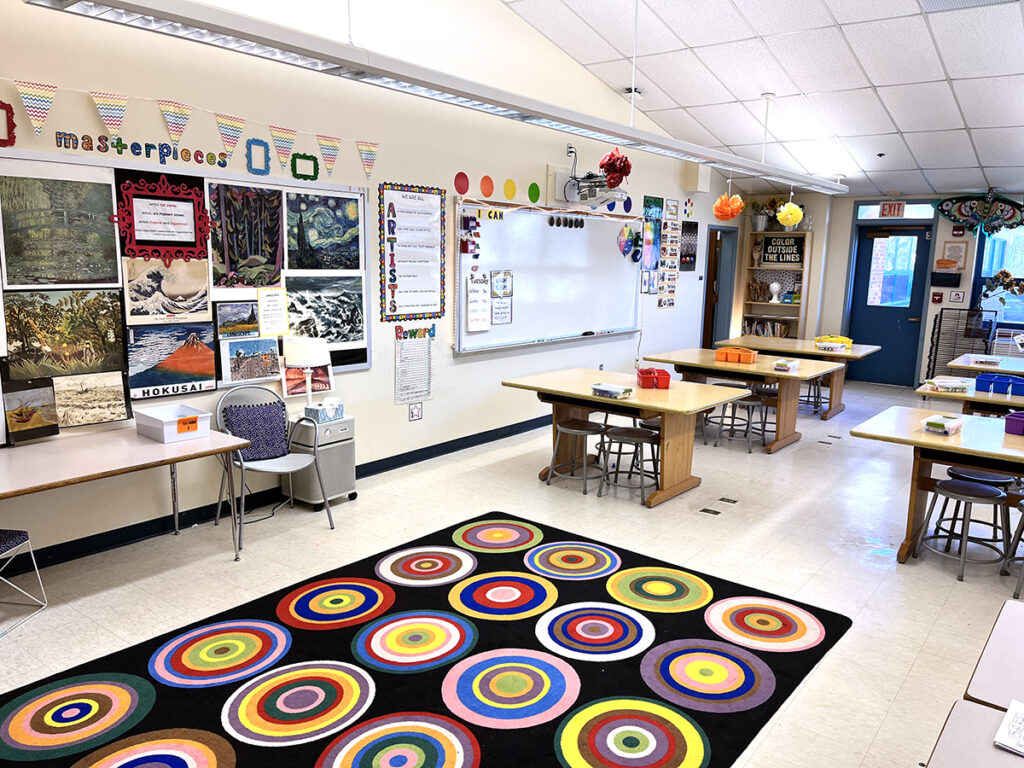
2. Provide visuals.
Many of us prefer visual learning as art teachers, but some of our students depend on it. When we create lesson resources, do we take the extra time to duplicate our written project steps, materials, and vocabulary with images? Let’s take a peek at some ways to add visual elements to your lessons.
Add visuals such as:
- Illustrate how to problem solve or manage a problem in a short video.
- Model real-life application during demonstrations.
- Insert photos of individual materials in supply checklists.
- Number written project steps and supplement with photos.
Combine the first two strategies by simplifying your visuals. Remove, hide, or erase the posted steps and materials when they are no longer needed. This gives students less information to wade through to get to the necessary step or material. It also reminds both you and them what step they are on.
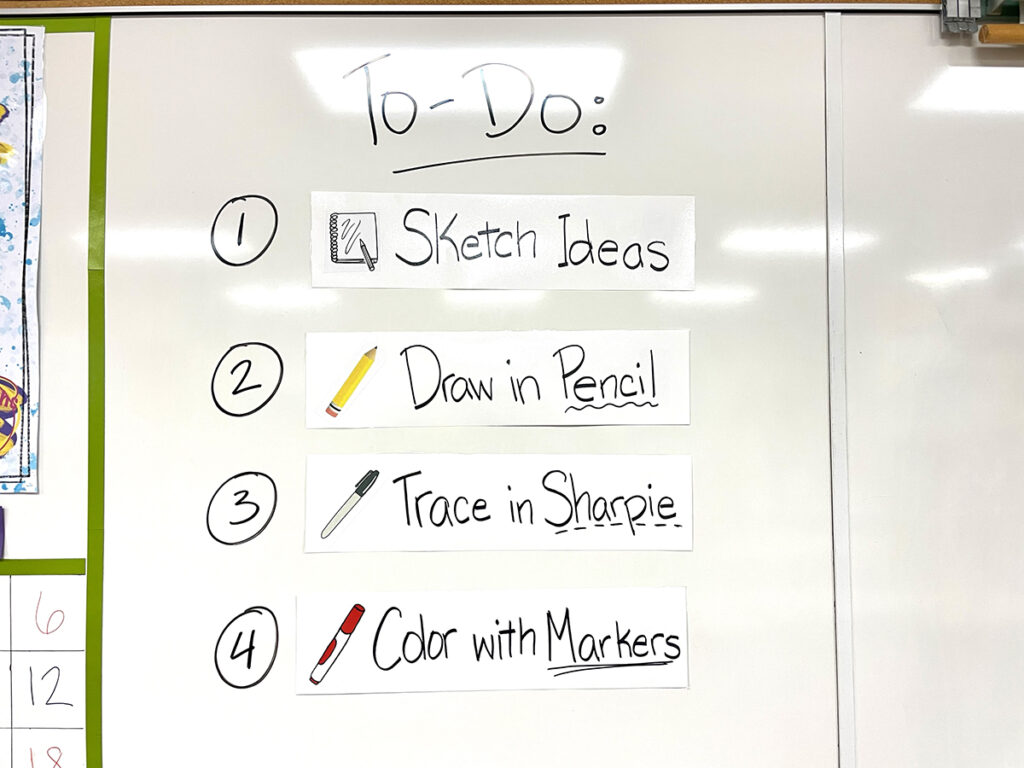
3. Plan backward.
We can get hyper-focused on an individual lesson or end product. We forget to step back and look at the bigger picture. Start with the objective in mind and then work backward. Figure out what students need to think about and what skills they need to master or tap into. Examine how you can assist students with organizing their workspaces. Base your instructional strategies, resources, and prompts on those reflections.
4. Guide thinking processes.
Thinking processes are invisible and, as such, can be hard to pinpoint when there are challenges. In short, Kelley describes metacognition as “thinking about thinking.” Some students are not self-aware enough to know what they need when it comes to regulating or adding depth to their thinking. Incorporate strategies like journaling prompts, self-guided questions, reflective sentence starters, and short, open-ended responses to walk students through the thinking at hand. Check out the Visual Journaling Collection in FLEX Curriculum for detailed lesson plans and step-by-step instructions.
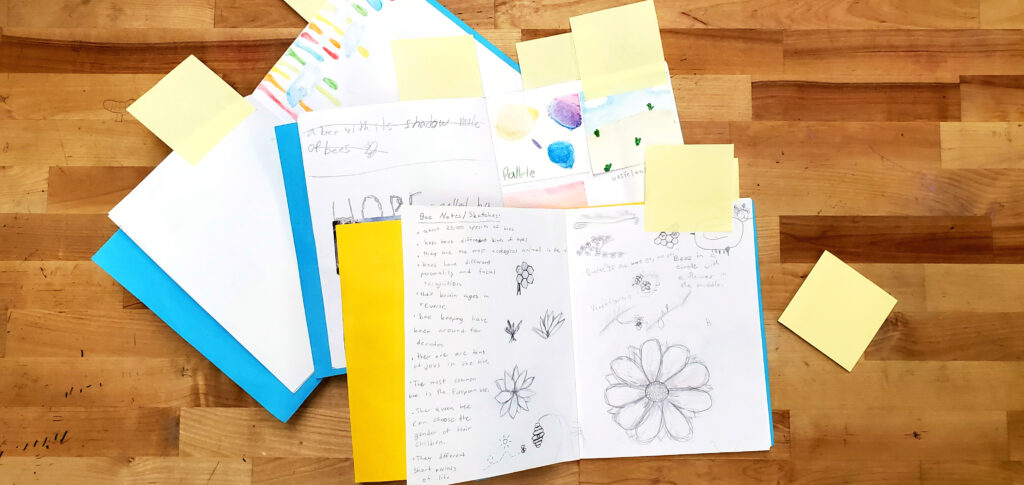
5. Allow multiple assessments.
As shared above, learning and art are not a “one size fits all” approach. Therefore, assessment should not be either. Give students multiple opportunities to practice with different mediums before assessing them. Arrange more than one assessment and let students choose so they can show off their learning in the mode that works best for them. If an assessment is stressing you out and you are unsure how to cram everything into your schedule and scope and sequence, remember that you do not need to assess or grade everything at all times. As long as your assessment reflects your learning objective, you can base your assessment on the most important concepts and skills.
6. Consider literacy levels.
Written text comprises much of our instructional material. We often write things out in a way that is clear to us. If your written material is too advanced for your students, you are no longer assessing their comprehension of the art content but how well they can read and write.
Do a little digging to investigate your students’ reading and writing levels. If you are at the elementary or middle school level, ask their classroom or ELA teacher where students are at. If you are at the high school level, look at your roster to see what grade levels are reflected in each class. You can also talk to your school testing coordinator or administrator about your school’s ELA standardized testing results. For all grade levels, find out if you have any students who are English Language Learners, have a learning disability, and/or an IEP or 504 plan.
7. Eliminate noises and harness intentional sound.
The art room can be a noisy place, full of chatter and shrieks of joy. While this can be exciting for some students, it can overwhelm others. When there is a lot of noise, it can be yet another thing a student needs to process before they can focus on the content. Consider the parts of your lesson and what noise level would be best for each.
In addition to thinking about how you can eliminate unnecessary sounds, deliberately add in sounds that contribute to learning. For example, play soothing music or nature sounds, or come up with catchy rhymes or raps to review information.

8. Ask for help.
Even though we are teachers, we are not supposed to always have the answers. It’s good to admit we need help and model the process for our students. Collaborate with other adults who work with the student and find out what already works well. Other adults can include parents, caregivers, your school’s special education team, support staff, and paraprofessionals. You can also get help from other students by asking them to be peer tutors or buddies.
And the most important person to ask for help from is your student who is struggling! Sit down for a one-on-one chat and ask them what is holding them back and what you can do to help. Even if they don’t have an answer, asking them will build their trust in you, and you can troubleshoot together! This will promote self-advocacy and empower them to take more responsibility for their learning.
Trying to remember all of these barriers and strategies can be a lot of pressure at first! Kelley reminds you to keep trying through trial and error and to give you and your students grace as you learn to work well together. The strategies above will become second nature to you with each art lesson you teach. As you learn along with your students, be open and reflective. Consider what is working well and how you can improve things next time for all your students. If you find yourself looking for more ways to succeed when it comes to cognitive learning barriers, take the course, Adapting the Art Room. Let’s keep making the world a more beautiful place, creating one artwork at a time and removing one learning barrier at a time!
What is one cognitive learning barrier that surprised you?
Which strategies will you try out in your next lesson?
Magazine articles and podcasts are opinions of professional education contributors and do not necessarily represent the position of the Art of Education University (AOEU) or its academic offerings. Contributors use terms in the way they are most often talked about in the scope of their educational experiences.
